By Allyn Vannoy
Lieutenant Wessling did not believe that his two 75mm assault guns could effectively deal with the German panzers. He watched one of the tanks bring its gun to bear on his own while thinking, “Wessling, somebody is going to win this fight and it won’t be you!”
In September 1944, while the U.S. Third Army’s XII Corps was advancing across France toward the German frontier, the German High Command believed that there was an opportunity to strike a blow against American forces. The 5th Panzer Army intended to cut off the U.S. 4th Armored Division. Vigorous efforts were made to assemble the necessary forces—the LVIII Panzer Corps, XLVII Panzer Corps, 11th Panzer Division, 21st Panzer Division, 15th Panzergrenadier Division, and the 107th, 108th, 111th, 112th and 113th Panzer Brigades. Few of these units were at full strength; however, the panzer brigades boasted new PzKpfw. V Panther tanks, although their crews were not fully trained. The brigades also included the workhorse PzKpfw. IVs.
The LVIII Panzer Corps was to strike the 4th Armored Division from the north. At the same time, the XLVII Panzer Corps, with its 111th and 112th Panzer Brigades and 21st Panzer Division, was to strike from the south toward the city of Nancy, cutting off the XII Corps. In its path was the town of Luneville, located southeast of Nancy at the confluence of the Muerthe and Vezouze Rivers. To the east of Luneville were two large forests: the Foret de Parroy and the Foret de Mondom.
Though American intelligence identified German forces massing in the area they believed that any attack would be made against the nearby American Seventh Army.
The 2nd (Mechanized) Cavalry Group was assigned to protect the southern flank of the 4th Armored Division as it moved to envelop Nancy on September 11. The 2nd Cavalry Group consisted of the 2nd and 42nd Cavalry Squadrons, equipped with M8 armored cars mounting a 37mm gun and assault guns carrying a short-barreled 75mm howitzer.
A mechanized cavalry group was composed of four cavalry squadrons plus engineer and artillery squadrons; each cavalry squadron included four troops—three troops equipped with armored cars and halftracks, each of three platoons, an assault gun troop, and a light tank company.
Combat Command Reserve (CCR) of the 4th Armored Division, under Colonel Wendell Blanchard, was operating in the vicinity of Luneville. CCR had M4 Sherman medium tanks with 75mm guns, M18 self-propelled tank destroyers with 76mm guns, M7 self-propelled 105mm howitzers, and halftracks mounting .50 caliber machine guns.
The 2nd Cavalry Group’s commander, Colonel Charles H. Reed, was an outstanding armor officer—a graduate of the U.S. Military Academy. The commander of 42nd Squadron, Major James H. Pitman, was also a West Point graduate.
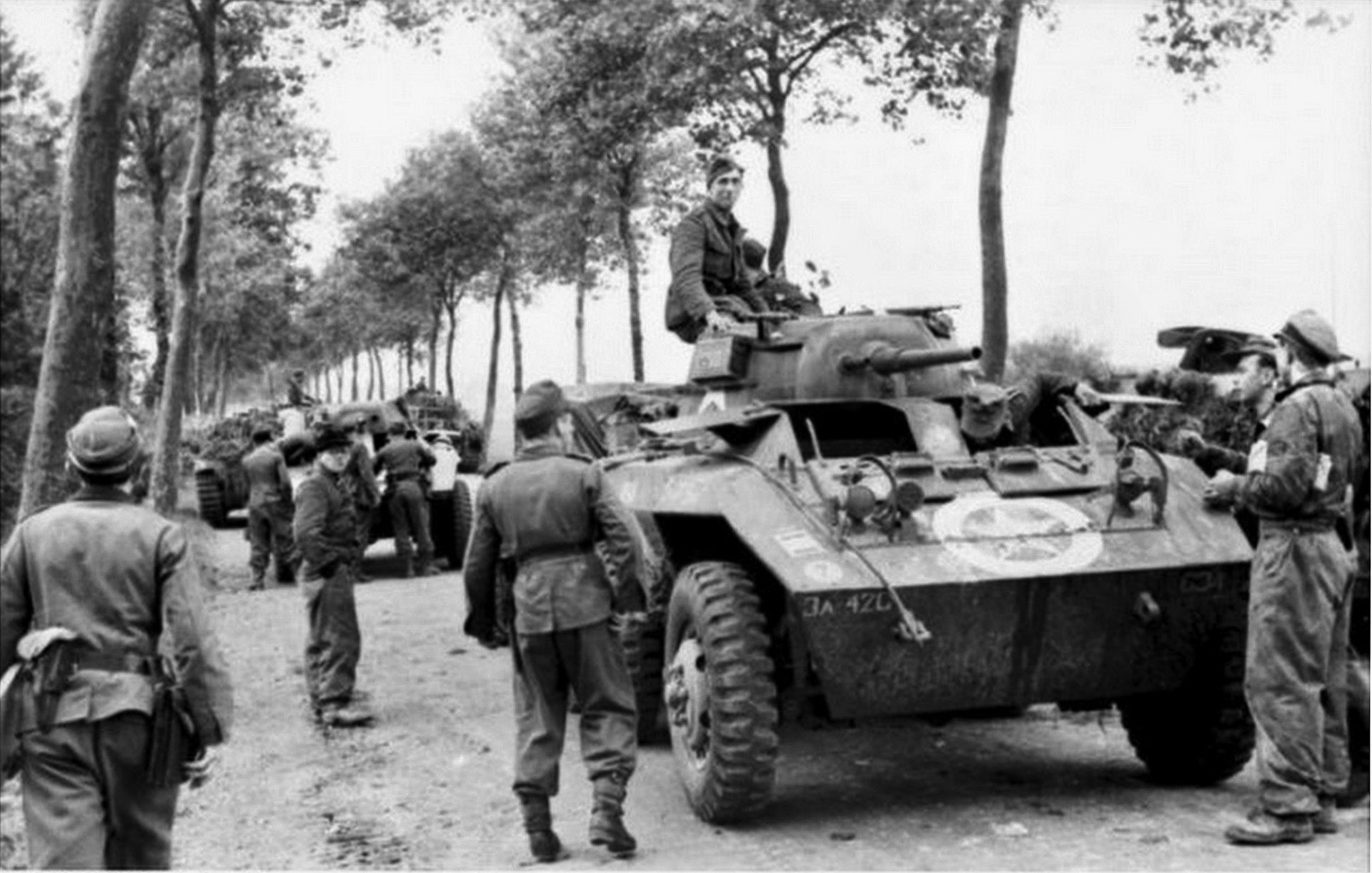
On the morning of September 15, troops of the 42nd Squadron were assigned to take Luneville. Approaching from the south, one platoon was to move in mounted, another to approach dismounted. But before the troopers had entered the town, German 88mm artillery, anti-tank guns, and small arms threw up a heavy volume of fire.
As the Americans moved in, Tech 4 Eugene Fehr, radio operator in one of the 42nd Squadron’s armored cars, recalled, “Something gave the M8 a helluva jolt and my driver looked at me and yelled that he couldn’t steer any more. We climbed out, saw that an 88 had blown off our right front wheel, and immediately dived into the ditch alongside the road. We were no more than on the ground when a second 88 drilled the car right through the middle. After that we did just what the rest of the dismounted men were doing—ran!”
Tech 5 Kyle Rootes, driver of his commanding officer’s vehicle recalled, “Bug Eyes Spence, my machine gunner, got his hand smashed by an anti-tank shell ricocheting off his .50 caliber mount. He was real calm as he waited to be evacuated.…”
Unable to overcome the German resistance, the troopers pulled back.
Troop A, 42nd Squadron, on the right flank of 2nd Cavalry, advanced as far as Benamenil, east of Luneville, and cleared the Germans from an ammunition dump they had discovered. Engineers were directed to destroy the dump. Troop B followed Troop A into the Moncelles-Luneville area, southeast of Luneville, where they discovered another ammunition dump.
Captain Henry Ebrey, Troop B, directed a section of Lieutenant Lindoerfer’s platoon to set up its guns across the river from Flin, 12 miles southeast of Luneville, below the town of Chenevieres, covering the road running southeast from the town of Baccarat.
It was here, about five miles from Baccarat, that a Frenchman reported to Lindoerfer that six German panzers were in Baccarat. The lieutenant placed little credence in the report given recent, similar, information that had proved less than accurate. When a POW, a German officer, claimed it was the concentration area for 160 Panther tanks unloading from rail transport at the town of St. Die 15 miles to the south, the 2nd Cavalry Group headquarters contacted XII Corps requesting tank destroyers and artillery support.
The 42nd Squadron was reinforced by elements of Colonel Blanchard’s CCR. Blanchard had with him the 696th Armored Field Artillery Battalion, elements of the 489th Antiaircraft Artillery Battalion, the 35th Tank Battalion, the 10th Armored Infantry Battalion, and Headquarters and B Companies of the 704th Tank Destroyer Battalion. The next day, the 16th, this force launched a three pronged attack on Luneville. The Squadron’s C Troop attacked from the west while B Troop attacked from the southeast and CCR attacked from the northwest. B Company, 704th TD Battalion covered CCR’s left flank northwest of the town.
In this fight for Luneville, the 35th Tank Battalion was operating without its B and C Companies, which had been detached for service elsewhere. The battalion was positioned initially in the village of Deuxville, northwest of Luneville, then moved to occupy high ground northwest of the town. Though this 35th Tank force did not participate in the liberation of the town, it did repel a counterattack, destroying two halftracks and three antitank guns at a cost of a Sherman tank, two men killed, and 15 wounded.
On the afternoon of September 16, the 42nd Squadron launched a coordinated attack on Luneville from the south, southeast, southwest, and east at 1:30 p.m. French sources provided intelligence that the Germans had moved six panzers to the town along with several anti-tank guns. Troops B and C carried the brunt of the assault, supported by assault guns and tanks. The Germans were driven back by heavy and accurate fire. By 4:10 p.m. a platoon of Troop B, entering Luneville from the east, had taken the railroad bridge in the town’s center. Troop C advanced from the west against determined resistance. The Germans were eventually forced to withdraw to the woods to the north and hills to the northeast.
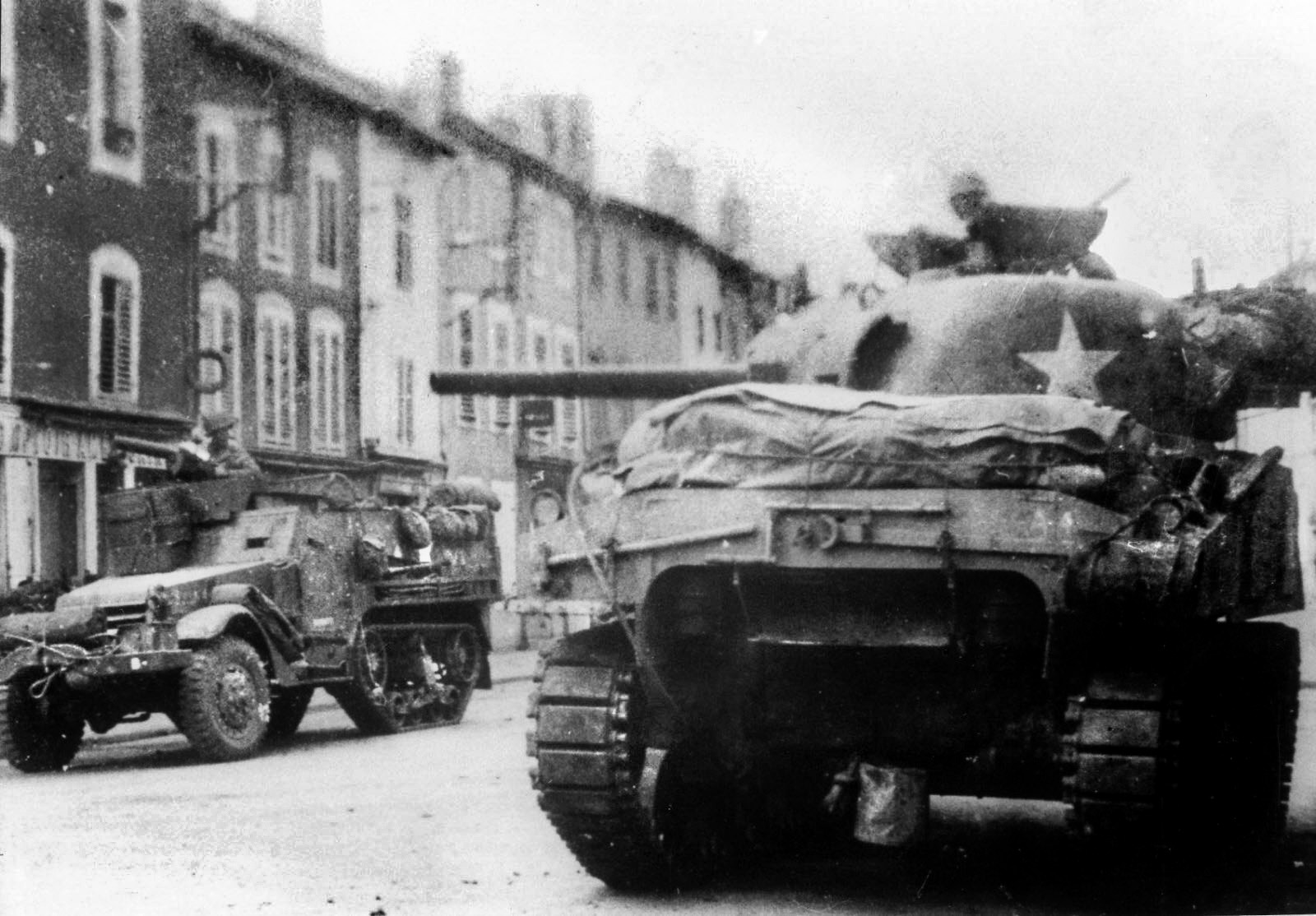
While most of B Troop, 42nd Squadron, was engaged in Luneville, Sergeant James Hart’s section of 1st Platoon was sent west over the Muerthe River to set up an outpost on a road leading into Luneville. At one point, a column of German panzers and infantry advanced up the road. Sergeant Hart’s men opened fired at close range, killing a number of Germans. The Germans then withdrew.
Once the Americans pushed the Germans out of Luneville, CCR assumed responsibility for the town. The Germans had lost 75 men killed and another 18 taken prisoner.
The following day, September 17th, the 2nd Cavalry Group assembled in the vicinity of the Foret de Mondon, east of Luneville, with its A Troop, 42nd Squadron, screening in the forest to the southeast and B Troop covering the southern approaches to Luneville.
The 42nd Squadron outposted the town. The 2nd Squadron, having rejoined the group, was pushing north and east. Troop B, 2nd Squadron, had taken Veho, a village about 10 miles east of Luneville, then fought its way another two-and-a-half miles into Leintry. During the day’s engagements, the 2nd Squadron killed 72 Germans, took 70 prisoners, and destroyed 22 vehicles.
Also on September 17, the 35th Tank Battalion undertook the clearing of German forces from the vicinity of Jolivet, five miles northeast of Luneville, and the Foret de Parroy. One platoon of A Company attacked Jolivet and knocked out two antitank guns at a cost of one medium tank. Meanwhile, D Company conducted a sweep that accounted for one anti-tank gun and a halftrack. They also took 15 prisoners from Reconnaissance Battalion 115. German casualties in the sector included 75 killed. The Americans suffered two killed, 15 wounded, and a Sherman knocked out.
The Germans infiltrated a large number of troops back into Luneville so that by the night of the 17th their commanders believed that they had recaptured the town.
During the afternoon, Lieutenant A.L. Wessling of Troop E, 42nd Squadron, returned with his platoon to their bivouac area from a roadblock with a section of Lindoerfer’s platoon on the road to Baccarat, about a mile from Chenevieres.
On the morning of September 18, the group received orders to prepare to move north to the flank of XII Corps. That same morning, Captain Welsh, E Troop’s commanding officer, was called to Squadron Headquarters at 8:00 a.m. He then informed Wessling that six German panzers were coming up the road from Baccarat and that they were to prepare to meet them.
Wessling had moved his men into position about 900 yards from the roadway when he noticed a horse-drawn farm wagon loaded with hay standing in the roadway to their front. Wessling was standing beside one of his unit’s guns observing in the direction of Chenevieres as German armored cars came up the road heading for Luneville. At that moment Wessling felt that they had reached their position, well in advance of the approach of any enemy units, until a jeep came speeding up the road with the driver screaming, “Fire! Fire!”
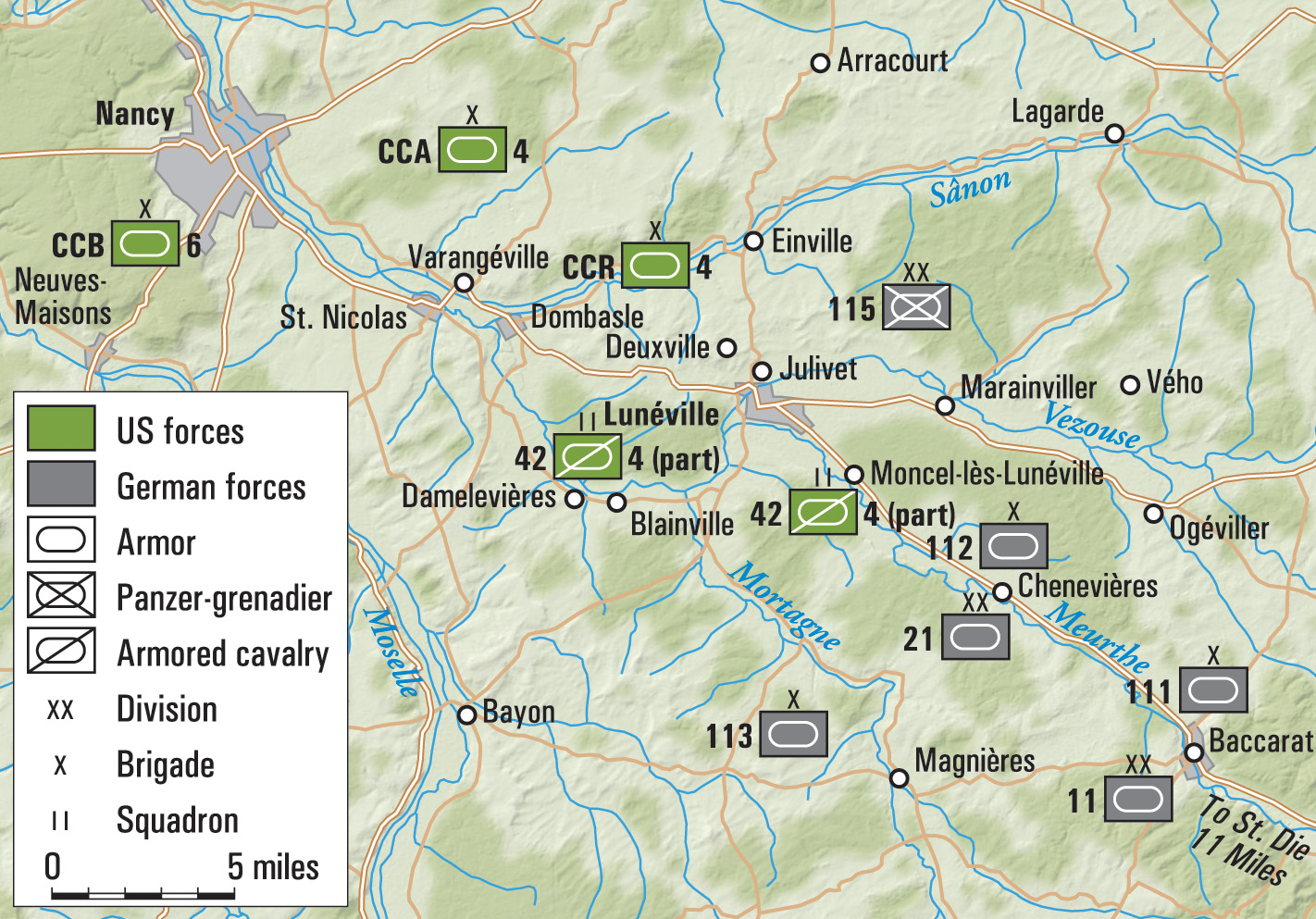
Wessling took a quick look around but could not see anything to fire at. A moment later, a Frenchman appeared and began to lead the horse and wagon. The wagon was barely out of the way when it revealed three panzers. They had backed off the roadway into the ditch so that only their turrets were visible.
Wessling had two assault guns—not the type of weapon he felt could successfully deal with the panzers. He watched one of them bring its gun to bear. He ordered the assault gun captain to fire at a range of 1,000 yards. The gun captain replied, “But I’ve already told the gunner 800.” Wessling told him to fire anyway. Just as the assault gun fired, Wessling saw the muzzle flash from the panzer and started to drop to the ground.
Wessling remembered, “As I got halfway down there was a blinding flash and a terrific explosion and I was knocked down … the first round had hit ten yards in front of me, just a little to the right of my gun, putting 14 holes of various sizes and shapes in me. I ran about 10 yards to the edge of the woods where Captain Welch was crouched down to have him tie my handkerchief around my right wrist, which had been punctured by a piece of shrapnel and was bleeding badly.”
Wessling told his driver to move their halftrack, which had been backed into the woods, out of there while also ordering his assault guns to move to the other side of the road and fire from there. But before they could move, one had a track blown off. Wessling then ran about 100 yards through the woods to the road were Captain Welsh, Major Potts, and one other officer were standing. Wessling said to Welsh, “What do we do now?”
Welsh replied, “You’re not going to do anything, you’re going to the medics.”
Along the way to an aid station, Wessling saw Troop C’s vehicles lined along the road. Wessling later learned that the Troop had lost four of its six guns and three halftracks. Surprisingly, only two troopers were killed and one wounded.
A Troop, 42nd Squadron, was screening along the north, east, and southwest of Foret de Mondon. Their first contact with German panzers came in the area of Chenevieres, where a section of the 2nd Platoon, A Troop, under Sergeant Seth Taylor, was outposted. Early in the morning Sergeant Taylor flashed an urgent message that his position was being overrun by seven panzers and 100 infantrymen. His command felt that this was only a local counterattack, but then another call from Taylor raised the number of panzers moving past his position to 17.
Meanwhile, at Benamenil, the 1st Platoon under Lieutenant Mike Bayer reported 40 enemy tanks lined up on a hill firing down at their position.
Back at Sergeant Taylor’s position they prepared an ambush with assault guns in position at the edge of the woods just south of Moncel-les-Luneville. The Germans seemed to advance blindly but then traded shots and eventually disrupted the ambushing force. The American commanders now realized that this was not a local action, but a large-scale counterattack. The 42nd Squadron was directed to delay the German advance in order to permit the 2nd Cavalry Group and the 2nd Squadron, both in exposed positions too far forward near the Foret de Embermenil northeast of Luneville, to withdraw.
The 2nd Squadron captured a German captain, who disclosed that he had been placing road markers for the 11th Panzer Division, which was detraining at St. Die and was supposed to head for Chateau Salin, north of Luneville. That night, troopers at the 2nd Squadron’s outposts heard the rumble of tanks and realized that an attack was imminent.
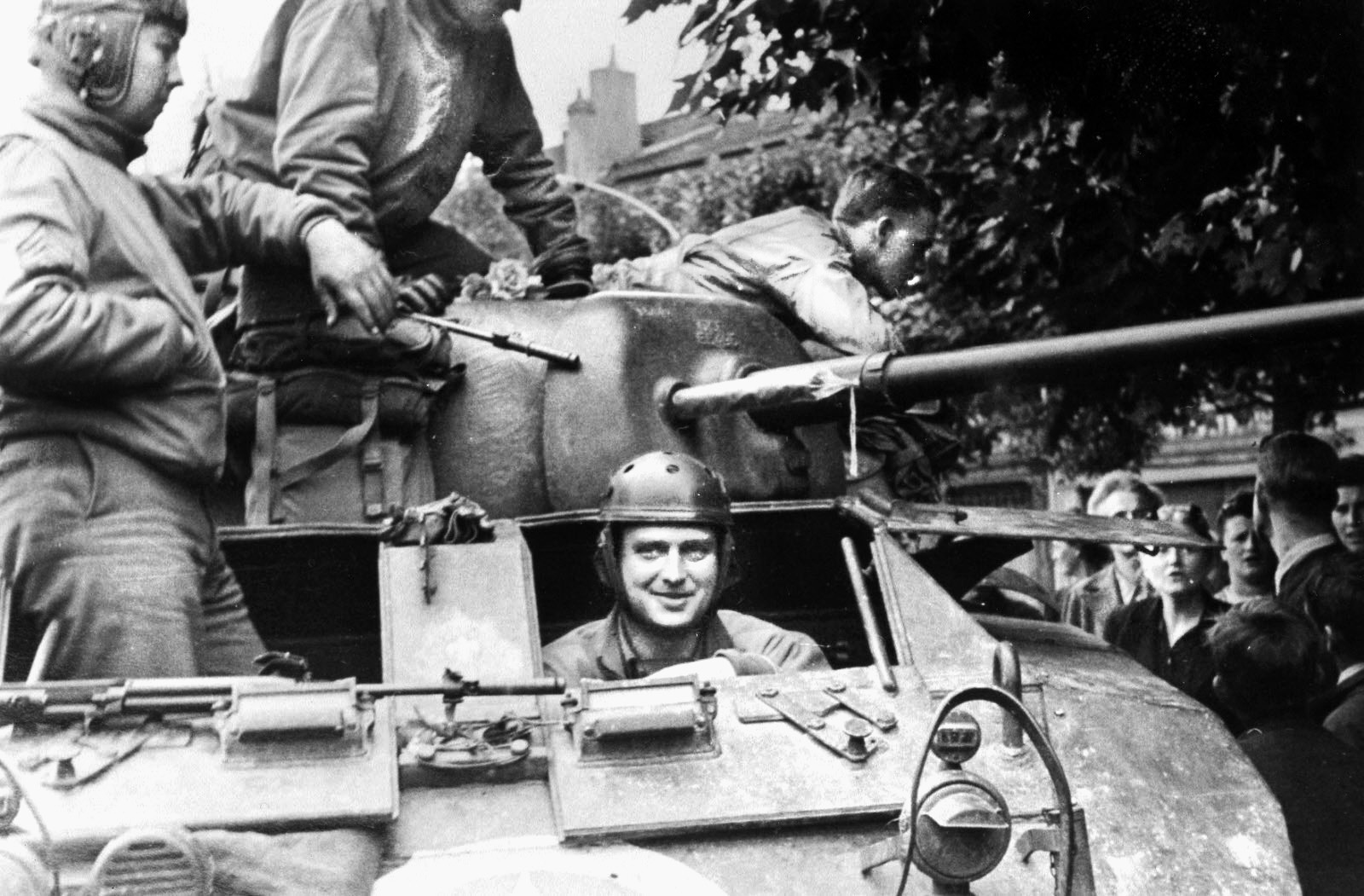
On the morning of September 18, the 111th Panzer Brigade was assembled in the vicinity of Baccarat, about 17 miles southeast of Luneville. The brigade had around 2,000 men and a battalion each of Panthers and PzKpfw. IVs, a reconnaissance battalion, and an engineer company. Also, the depleted but still potent 21st Panzer Division was just to the south. To the north, the 113th Panzer Brigade was to attack at 11:00 a.m. At around 6:00 a.m., the 111th Panzer Brigade began advancing toward Luneville.
About 7:00 a.m., the lead element, consisting of seven Panthers and supporting infantry, struck the forward outposts of A Troop. The German commanders mistakenly believed that Luneville was being held by units of the 15th Panzergrenadier Division, so the presence of American cavalrymen on the outskirts of the town came as an unwelcome surprise.
During the morning, the 3rd Platoon of F Troop, 42nd Squadron, went into position covering a road along which German forces were reported to be moving.
Tech 4 Frank Geronimo detailed the action: “We didn’t know much about the situation as there had been no time for orientation. From what we could gather we were pickled in, as patrols reported enemy near our positions on all sides. Luneville was reported to be open, but the road leading to it was well covered by enemy fire. The 1st and 2nd Platoons were called out to cover other avenues of approach along which the enemy would surely come… We were told that the 42nd had to hold at all costs!
“Soon after we were settled in position we heard the rumble of vehicles approaching us from the rear. It was Group Headquarters, 2nd Squadron and A Troop of the 42nd in a column of twos heading for Luneville, and wasting no time. The enemy opened up on us in earnest, with artillery, mortar, and antitank fire. The men in the column would leave their vehicles when a flock of shells came whistling in, then jump up and chase their vehicles down the road after the shells had landed.
“We pulled back over the bridge into the edge of the woods in order to escape some of the intense fire that was being directed at us. We heard, over our radios, that E Troop had lost three assault guns, which were in another section of the woods with the 3rd Platoon of F Troop. They had set a trap for the Tiger tanks (likely Panthers or PzKpfw. IVs), but the trap backfired as our light guns didn’t seem to damage the enemy armor. From the woods to our rear came the crews of the tanks of the 3rd Platoon (all its tanks having been lost), three assault guns that were still running, and the survivors of the crews of the guns that were knocked out. With them came some armored cars and bantams [jeeps] loaded with recon men who had lost their vehicles. The four [light] tanks of the 3rd Platoon, that had been with the assault guns, were completely bogged down during the action and could not be retrieved. The headquarters tank that had gone along, dismounted its crew and was attempting to hook onto one of the stuck tanks when their gunner had his leg sheared off by the first round fired at them. The second round broke the track of the headquarters tank. The tank commander picked up the gunner and ran over a hundred yards to put him in a bantam.
“Soon the 2nd Platoon appeared with more reconnaissance men and Captain Potts, who took over when word reached us that our Squadron commander had been killed and our Group commander wounded.
“We heard that CCR of the 4th Armored had moved into Luneville and that we were beginning to receive their artillery support. Captain Potts began to issue orders. He told us we had to make a break for it, two vehicles at a time, to Luneville, which was our only route of escape even though it was well covered by enemy fire.
“The vehicles started to leave with the dismounted men, who had lost theirs, clinging to the sides. Two bantams left first and a minute or two later two armored cars. Two tanks and two assault guns followed at short intervals. As the first vehicles hit the main road everyone grew tense as we watched them speed away toward safety. The tenth or eleventh vehicle to leave began to receive fire from enemy machines gun positions on both sides of the road on the far side of the bridge. The bridge, which we had to cross to get on the main road, was a high arched affair over the railroad and a beautiful target for the enemy tanks in position in Marainviller. Our vehicle was the seventh from the last to leave. With us there was another tank, a couple of bantams and armored cars. The two tanks proceeded [sic] the armored cars and bantams in order to pin down the enemy machine guns along the way.
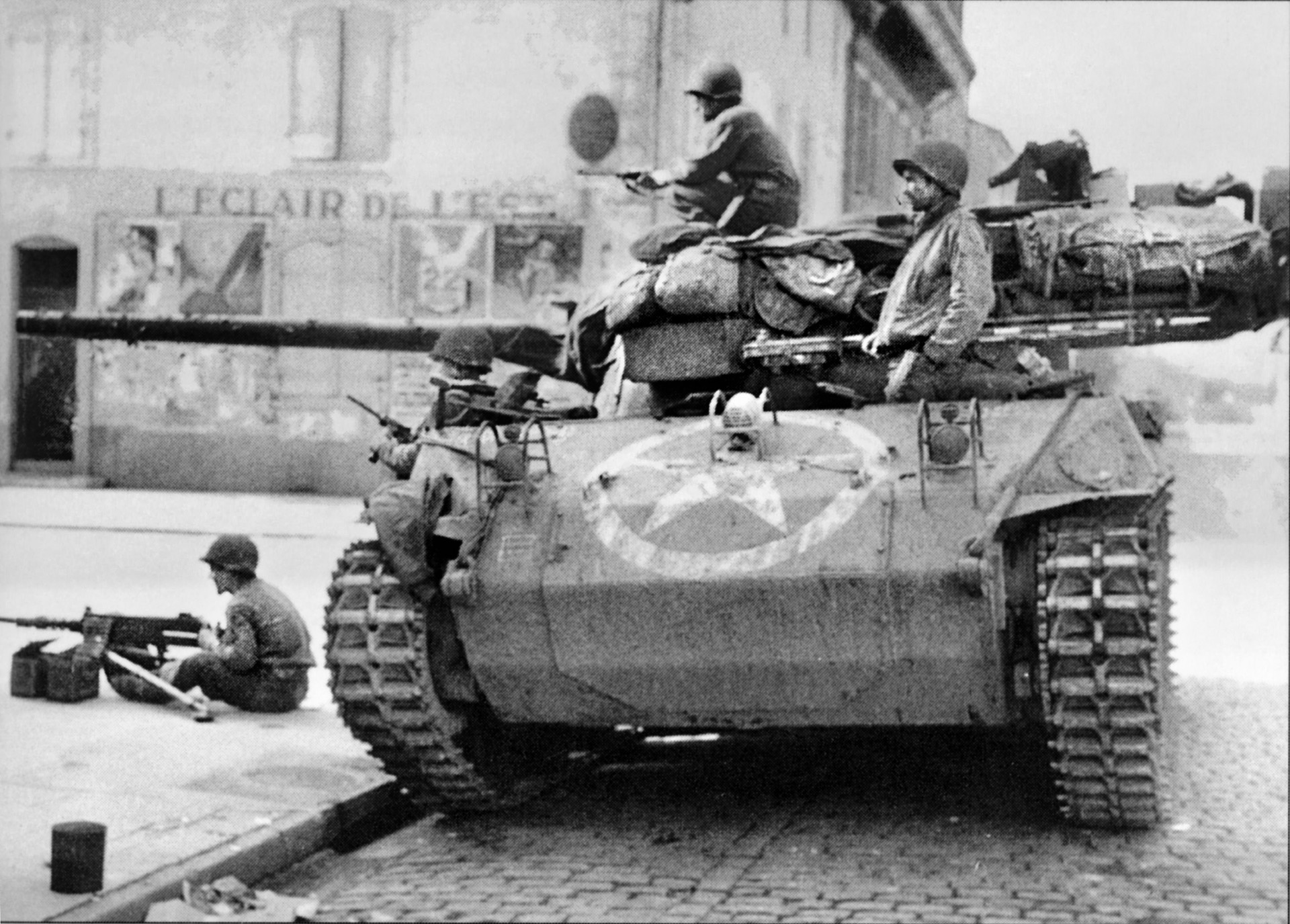
“As we hit the main road a round of AT just missed the lead tank. The dash into Luneville seemed to be made at a slow crawl, as we all sat in our vehicles with cold spots between our shoulder blades waiting for the next round to hit. Our driver had the gas pedal to the floor and although the speedometer registered 40 we still urged him on. When we skidded around the turn into Luneville we saw a TD with its 76 pointed square at us, and Sherman tanks had their gun barrels poked through every crevice and nook between buildings. They were a sight for sore eyes. As enemy artillery was falling heavily in Luneville we continued right on through and bivouacked near the 4th Armored’s supporting artillery batteries.”
When the German columns first started rolling toward Luneville, B Troop, 42nd Squadron, sent Sergeant Hart with his section of the 1st Platoon to secure the bridge over the Meurthe River. Sergeant Hart occupied the high ground west of the river near the bridge and placed his weapons at the edge of a wood so that they were trained on the bridge and the approaches from the east. Moments later, a German armored column came up the main road from the south heading toward Luneville, passing Hart’s position.
The Germans were advancing in multiple columns, passing through the woods behind Hart’s section. His guns opened fire on groups of panzergrenadiers who came into view just 100 feet away in the woods around his position. Hart’s men managed to kill several, but the Germans paid little attention except to fire a few return shots as they continued their headlong rush toward Luneville. However, a panzer suddenly appeared on a lane which led directly to Hart’s armored car. Gunner Tech 5 Eugene Smith frantically cranked the turret of the armored car through 180 degrees to lay the main gun on the threat. Smith fired 13 rounds of his 37mm at the panzer, but they only bounced off. The panzer was swinging its main gun to engage the armored car when a lucky shot killed the panzer commander. The panzer then backed away down the lane.
Hart’s section found itself cut off from the rest of the squadron, so they stayed in the woods and waited for nightfall, later making contact with the 106th Cavalry Group to the west.
The 11th Panzer Division had moved from southern France to participate in smashing the Nancy salient. Lieutenant Graf von Hoyos’s panzer company was the flank guard of the division, with six new Panthers moving up on the night of September 16, through Rambervillers and Baccarat to Ogerviller. They gunned their engines in an effort to make the Americans think there were panzers all along their front.
On the 17th, 11th Panzer approached Luneville, concentrating their forces. Accompanying them were elements of the 2nd Panzer Division, the Panzer Lehr Division, and the 16th Panzer Division. To the south was the 21st Panzer Division and the 102nd Panzer Brigade, while the 15th Panzergrenadier Division was north in the Foret de Parroy.
At dawn on September 18, von Hoyos’s panzer company was sent to Marainviller, on the main road east of Luneville. They held up outside the town until late afternoon as the area was pounded by American artillery fire. Toward dusk the fire slackened, and they moved on toward Luneville. There they encountered heavy fighting in progress involving A Troop of the 2nd along with CCR tanks and tank-destroyers. Von Hoyos lost two of his tanks as they met 12 Shermans. He was ordered to withdraw the next day due to fighting through Foret de Madon, to their rear.
The outnumbered U.S. cavalrymen fought a brief delaying action before retiring. Their delaying action, however, gave Colonel Reed time to send forward C Troop, the six assault guns of E Troop under Captain Welsh, and F Troop’s 3rd Platoon with its M5 light tanks with orders to set up an ambush on the road leading to Luneville.
Led by Colonel Reed and Major Pitman, the cavalrymen successfully sprang their ambush on the advancing German panzer infantry force at 8:00 a.m. At a range of 500 yards, E Troop’s six assault guns opened fire. “Although many direct hits were obtained, they just bounced right off,” recalled 1st Lt. Charles E. Harris. While the American light armored vehicles were engaging the German panzers, the rest of C Troop was fighting dismounted against the accompanying German infantry.
When Group Headquarters reached Luneville, the command vehicles were assembled around the town square. As Colonel Reed stood on top of a tank directing operations, Major Pitman drove up and reported the current situation to the colonel. But the Germans had the square zeroed in, and within a few minutes artillery rounds began to land. Colonel Reed was knocked off the tank, severely wounded. Major Pitman was struck and died immediately. Eleven were killed or wounded in the artillery attack. The group executive officer took command.
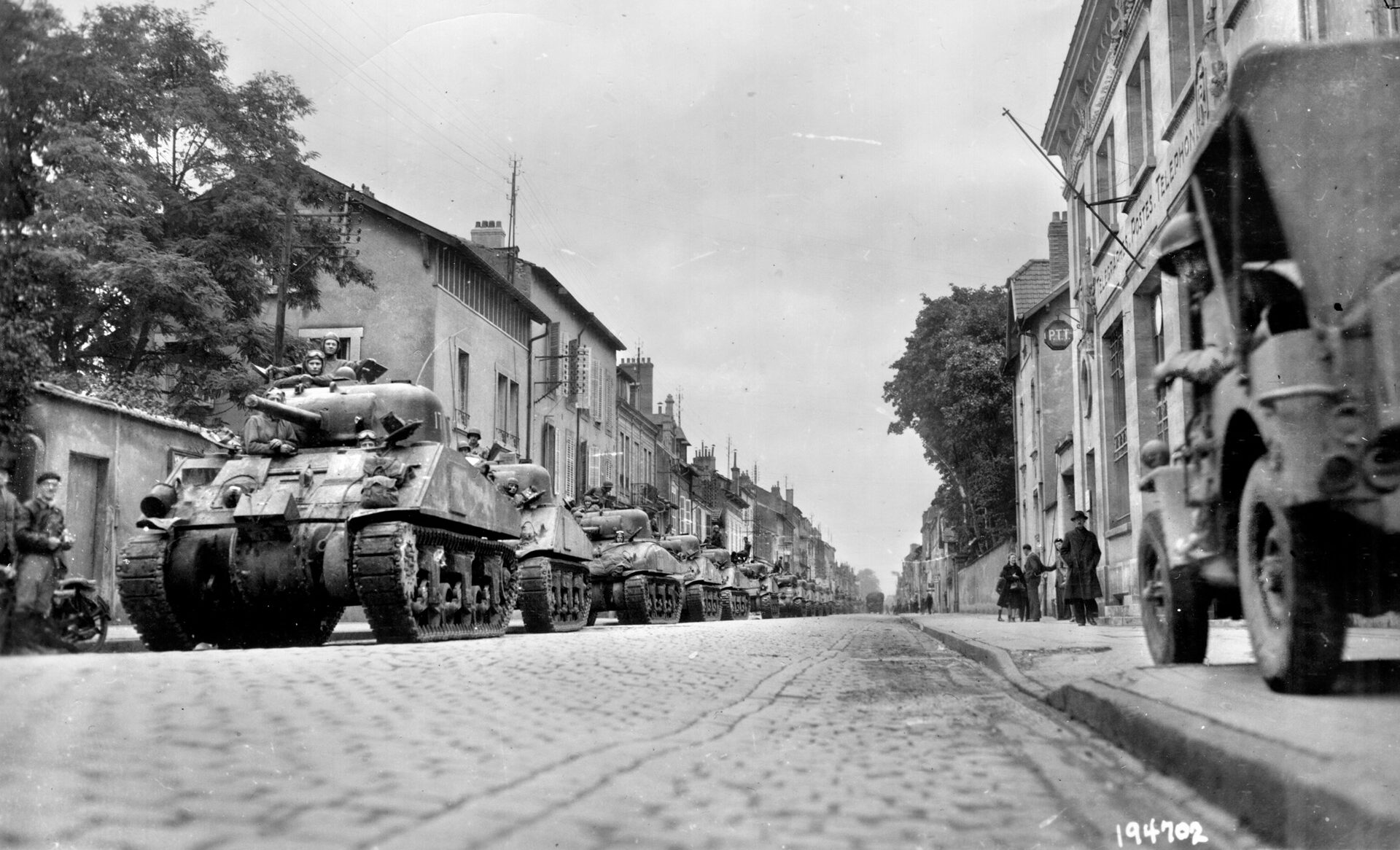
The fighting between the cavalrymen and the Germans was fierce. The American assault guns knocked out one Panther. In return, the Germans knocked out three assault guns, an armored car, and two jeeps. Several cavalrymen were killed.
The German panzers were able to break through the American line at around 11:00 a.m. and press on toward Luneville. The surviving American vehicles and infantry escaped into nearby woods.
Meanwhile, F Troop’s 1st Platoon was defending a bridge and a crossroads leading into Luneville. Tech 4 Geronimo, in one of the tanks tasked with covering the bridge, recalled: “We were receiving frequent and accurate artillery fire as the enemy already had the road zeroed in.” The Group Headquarters, 2nd Cavalry Squadron, and part of A Troop, 42nd Squadron, used this bridge to escape into Luneville ahead of the advancing Germans. Afterward, Geronimo and the tanks defending the bridge also pulled back into Luneville.
After the Germans broke through the cavalry screen, the fighting split into two engagements: a battle in the woods between the 2nd Cavalry and German infantry and a German attack on Luneville, which was held by elements of CCR, 4th Armored Division.
By late afternoon, the 42nd Cavalry Squadron was nearly surrounded but holding its positions. The situation was tenuous. “We didn’t know to what extent the enemy had advanced and the route we had planned to use for escape was cut off,” recalled 1st Lt. Harris. Fortunately, an American artillery spotter plane located an undefended trail. Using this trail, the cavalrymen attempted to escape encirclement. They met up with the cavalrymen of A Troop, who had been forced out of their positions further east. Together, this force located another undefended trail out of the forest and used it to get to Highway 4 some four miles east of Luneville. Here they joined up with two platoons of B Troop and continued to Luneville.
The next obstacle was a railroad bridge the Germans had covered by artillery and small arms. The cavalrymen called down artillery fire and then rushed their vehicles, two or three at a time, over the bridge and into Luneville, where they joined elements of the 4th Armored Division and the remainder of the 2nd Cavalry Group.
Having broken through the cavalry screen in the morning, the German Panthers, reinforced by elements of the 15th Panzergrenadier Division, pressed on to Luneville. The initial assault forced elements of 4th Armored’s CCR from the southeastern part of the town back into its center and northern part. In addition, the 113th Panzer Brigade was now heading toward Luneville from the east in the vicinity of the Vezouse River.
The American commanders reacted quickly. During midmorning, A Company, 35th Tank Battalion, moved into blocking positions northwest of Luneville.
The rest of the battalion took up blocking positions northeast of Deuxville. Forced to withdraw, the 2nd Squadron joined up with CCR in the eastern part of Luneville. B Company, 704th Tank Destroyer Battalion, sent its 3rd Platoon into Luneville and its 1st Platoon to reinforce positions of the 10th Armored Infantry Battalion north of the town. CCA, 4th Armored Division, was ordered to dispatch a task force to reinforce CCR, and the 6th Armored Division’s CCB was ordered from the area east of Nancy to Luneville as well. Further support was ordered from the 183rd Field Artillery Group’s 273rd and 738th Field Artillery Battalions, the latter equipped with 8-inch howitzers.
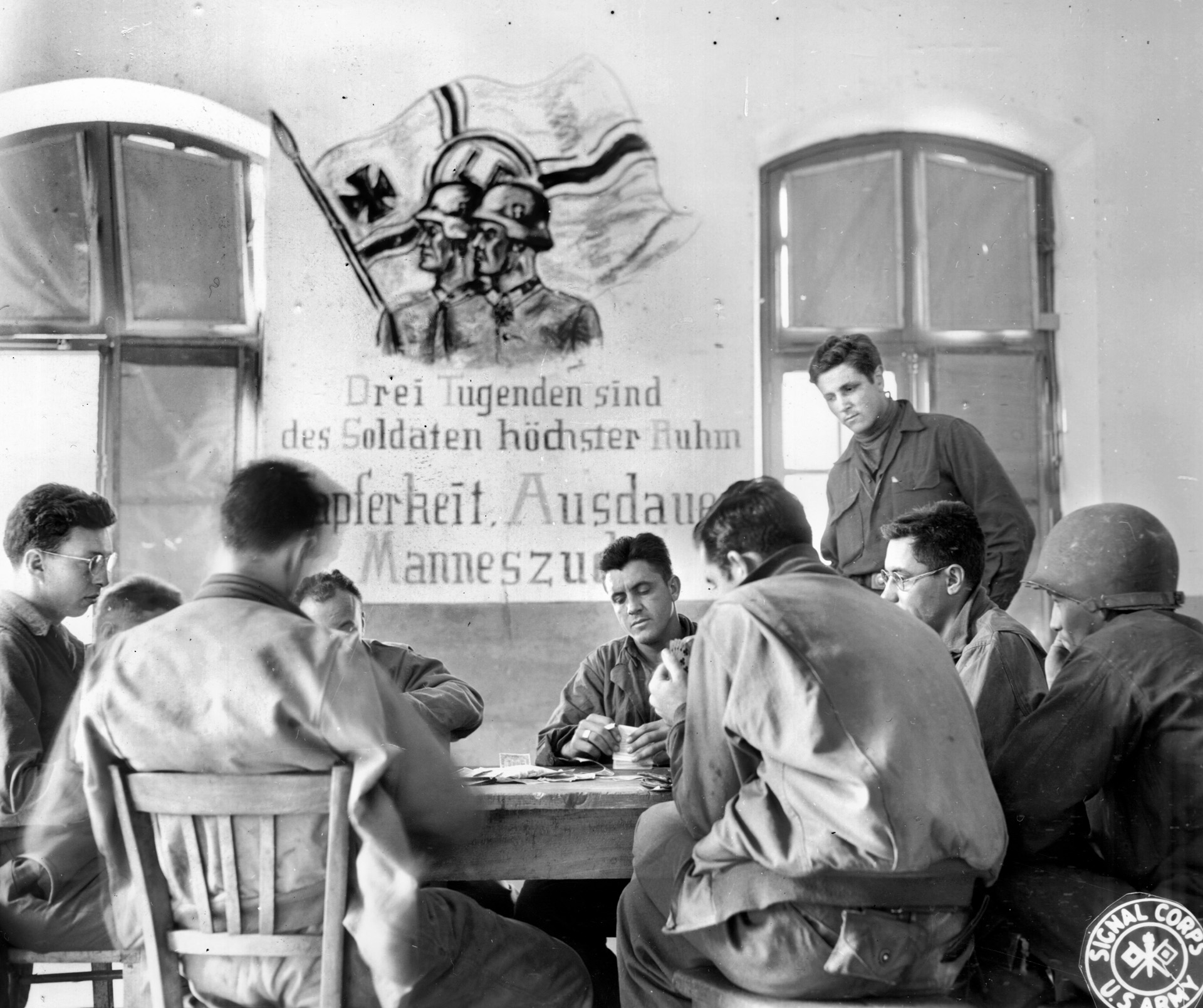
CCA, 4th Armored Division, immediately began forming a task force to help repel the German panzers. Task Force Hunter consisted of A Company, 37th Tank Battalion, B Company of the 53rd Armored Infantry Battalion, C Battery of the 94th Armored Field Artillery Battalion, and 1st Platoon, E Company of the 704th Tank Destroyer Battalion. TF Hunter started out for Luneville at 1:00 p.m. and assembled northwest of the town three hours later.
The arrival of TF Hunter enabled CCR to retake the lost section of Luneville. Aided by one of its forward observers located in a house in Luneville, C Battery of the 94th Armored Field Artillery Battalion fired on German positions. Infantrymen of the 53rd Armored Infantry Battalion and tanks of the 35th Tank Battalion conducted a series of attacks. A Company, 37th Tank Battalion, acted as a mobile reserve.
The 738th Field Artillery Battalion’s howitzers went into position just two miles west of Luneville. The battalion commander, Colonel William Garrison, and the executive officer, Major Horace Frierson, went forward to a hill that provided a vantage point from which they were able to observe retreating American vehicles and German antitank guns firing at them. Garrison ordered his howitzers to fire on the German guns at a range of 1,500 yards. Their shells quickly neutralized the antitank guns.
In the midst of the fighting, German communications broke down. The 111th Panzer Brigade and elements of the 15th Panzergrenadier Division had fought their way into the southern part of Luneville. Mistakenly assuming that the Americans had been driven out, LVIII Panzer Corps Headquarters ordered the 113th Panzer Brigade to disengage and head north.
By nightfall, the strength of the German attack on Luneville had been significantly reduced. Pressed by American reinforcements, the Germans gave up their earlier gains. After nightfall, the 111th Panzer Brigade was ordered to retire from Luneville and reform at Parroy, 11 miles northeast.
Around 8:00 p.m., elements of the 10th Armored Infantry Battalion and 42nd Cavalry Squadron entered Luneville from the south and discovered that the Germans were gone. Out-posts were setup and defenses established by CCR and TF Hunter.
By nightfall, the Americans had amassed a considerable force in and around Luneville. Detachments of the 10th Armored Infantry Battalion held the high ground northeast of the town. Most of the 35th Tank Battalion was in and around the town along with a company of the 53rd Armored Infantry Battalion from TF Hunter. On the high ground between Luneville and Deuxville were D Company, 35th Tank Battalion, and elements of the 704th Tank Destroyer Battalion and 10th Armored Infantry Battalion.
The Germans abandoned efforts to capture the town. Luneville cost them 13 panzers, 16 large caliber guns, and 232 other vehicles, as well as 1,070 men killed or captured.
The actions of the outnumbered cavalrymen delayed the German counterattack sufficiently to enable American armored forces to respond to a threat that could have outflanked the XII Corps and rolled up the right of Third Army.
Author Allyn Vannoy has written extensively on a variety of topics related to World War II. He resides in Hillsboro, Oregon.
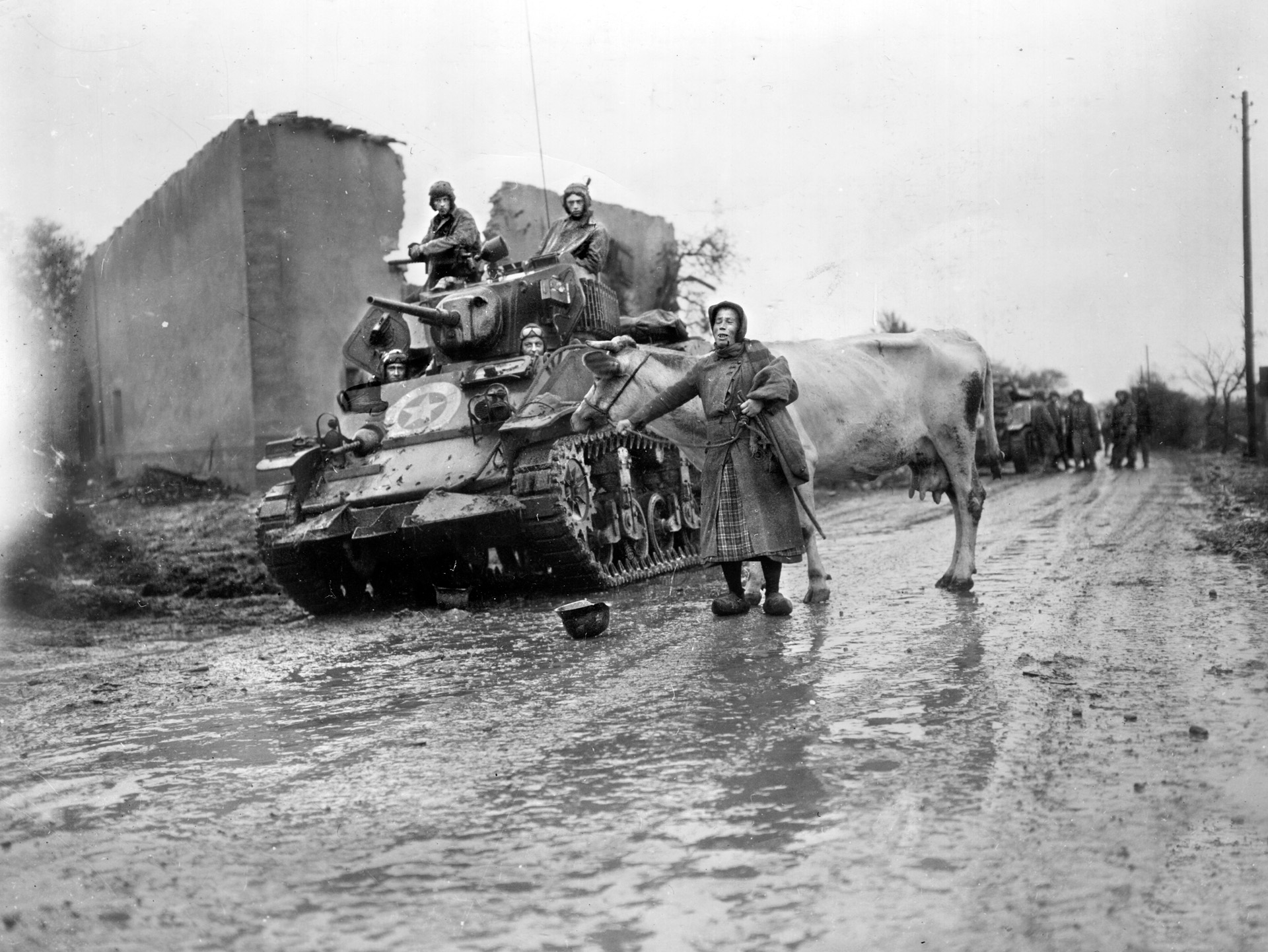
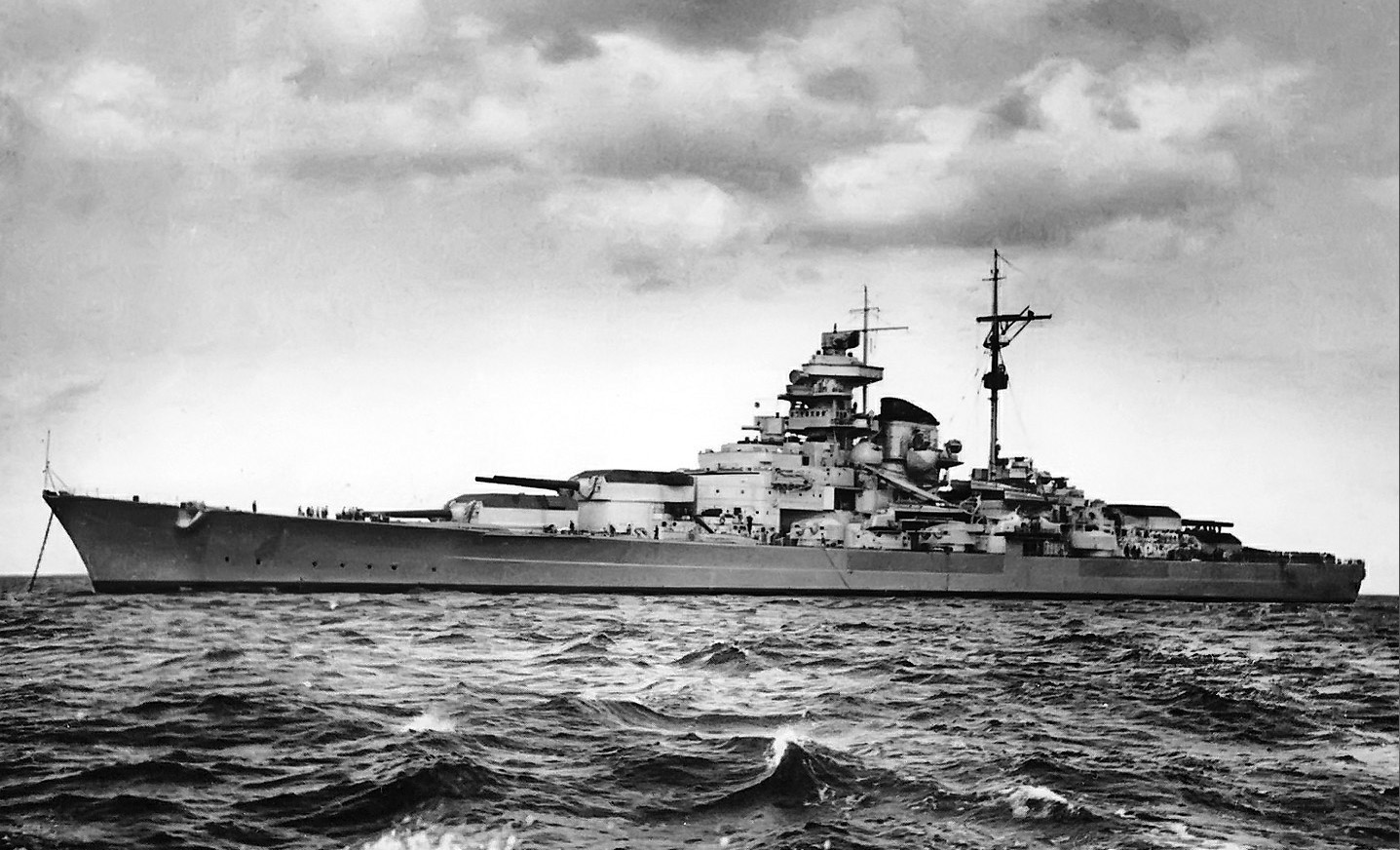
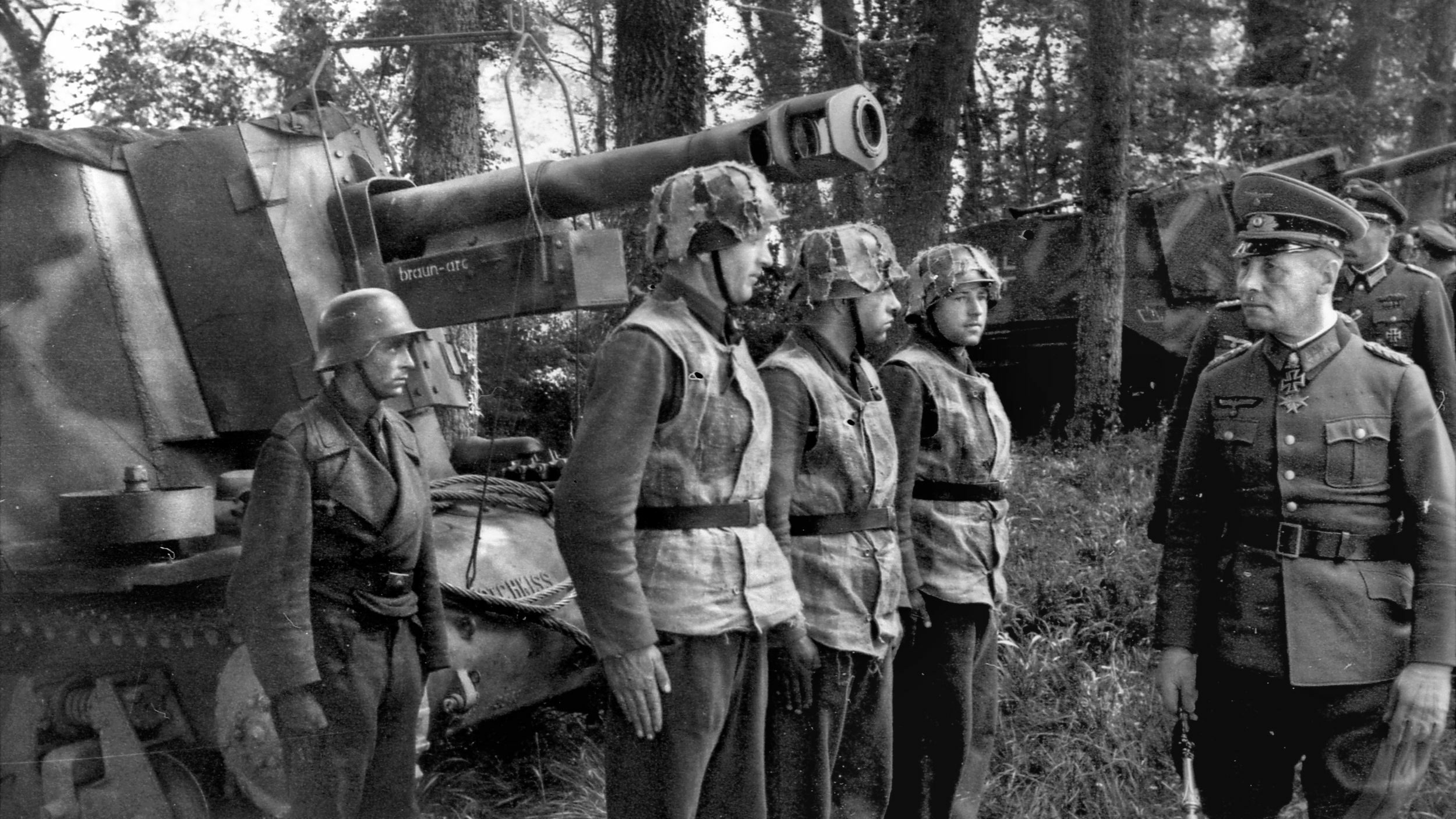
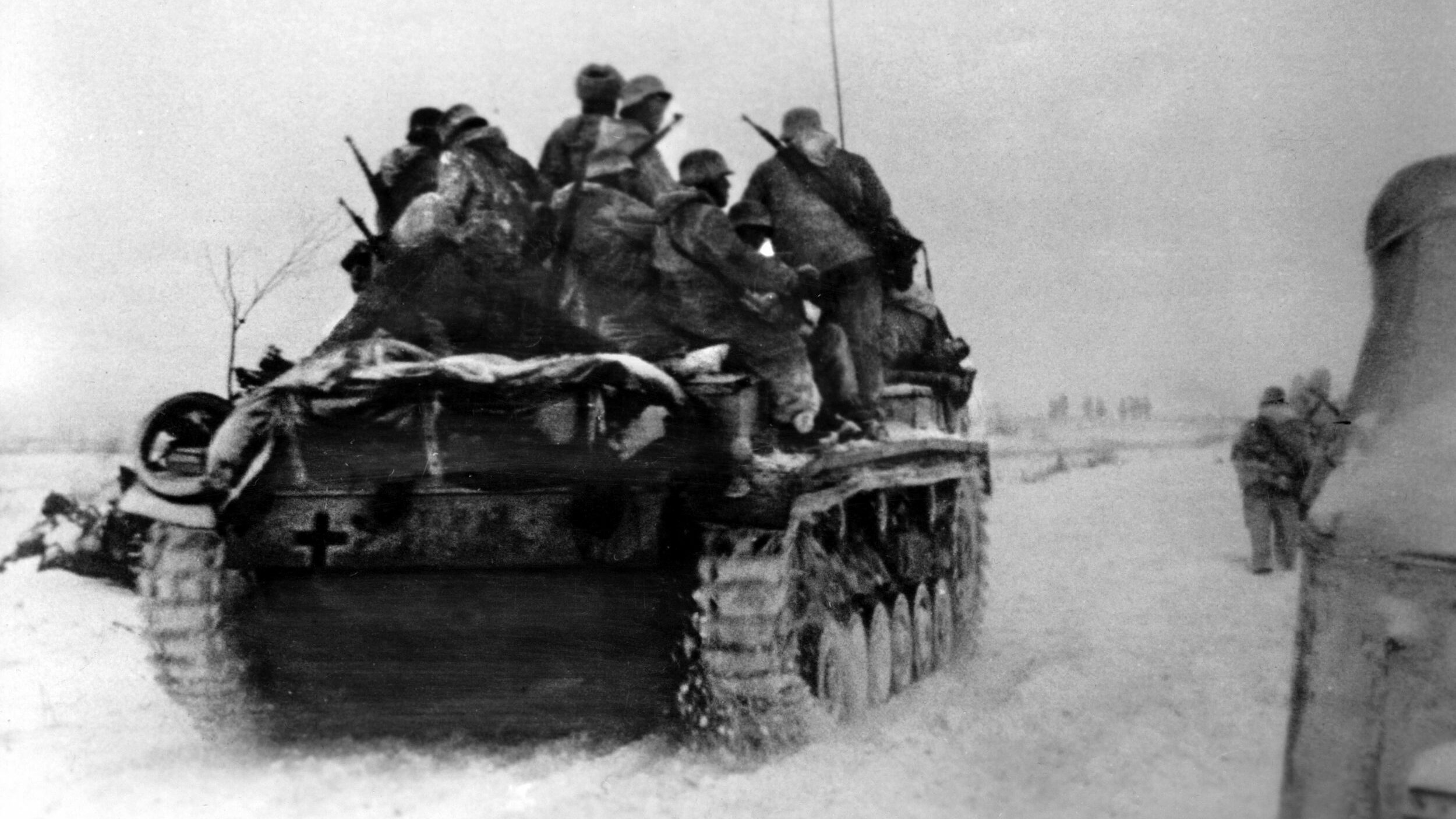
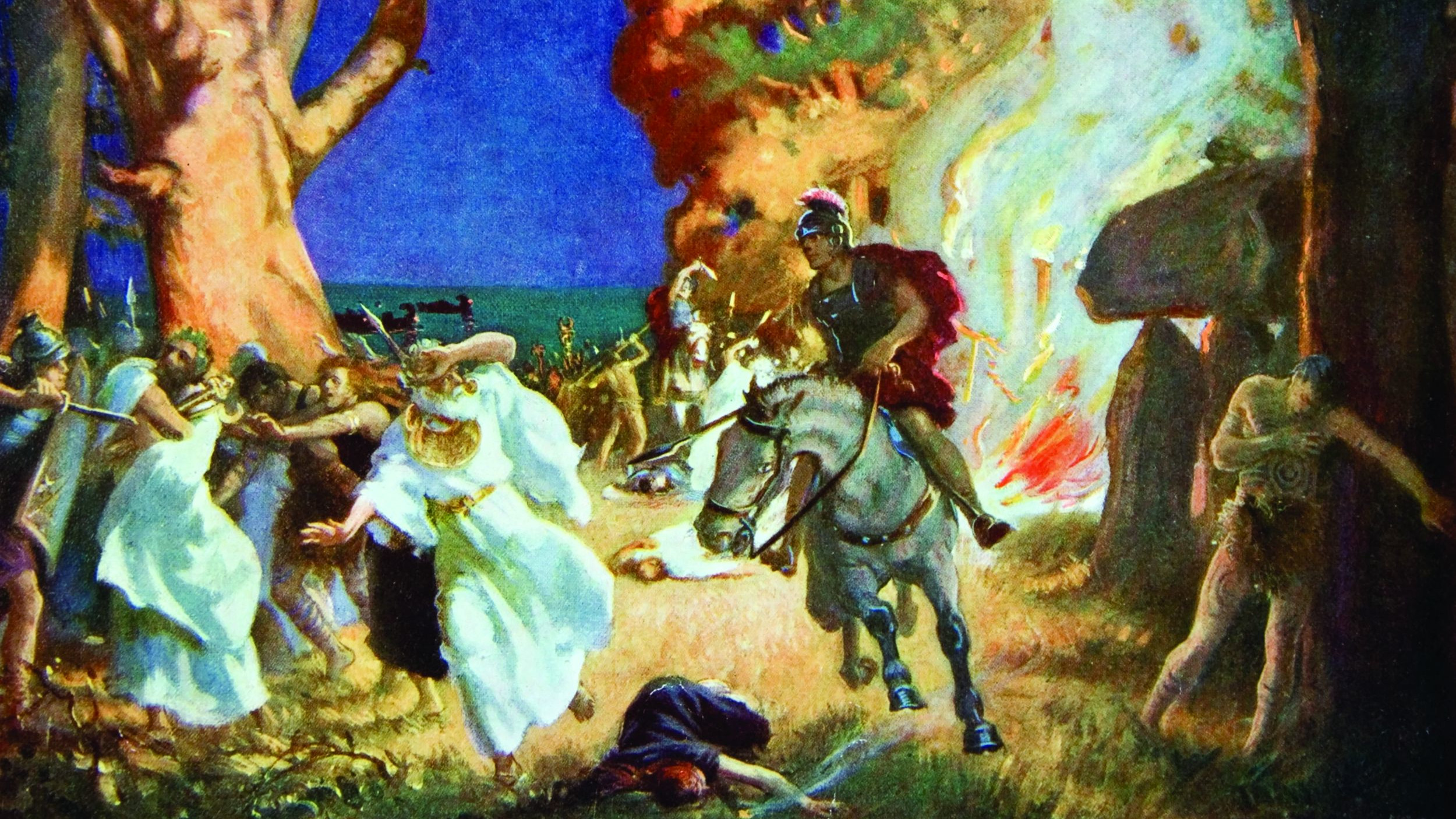
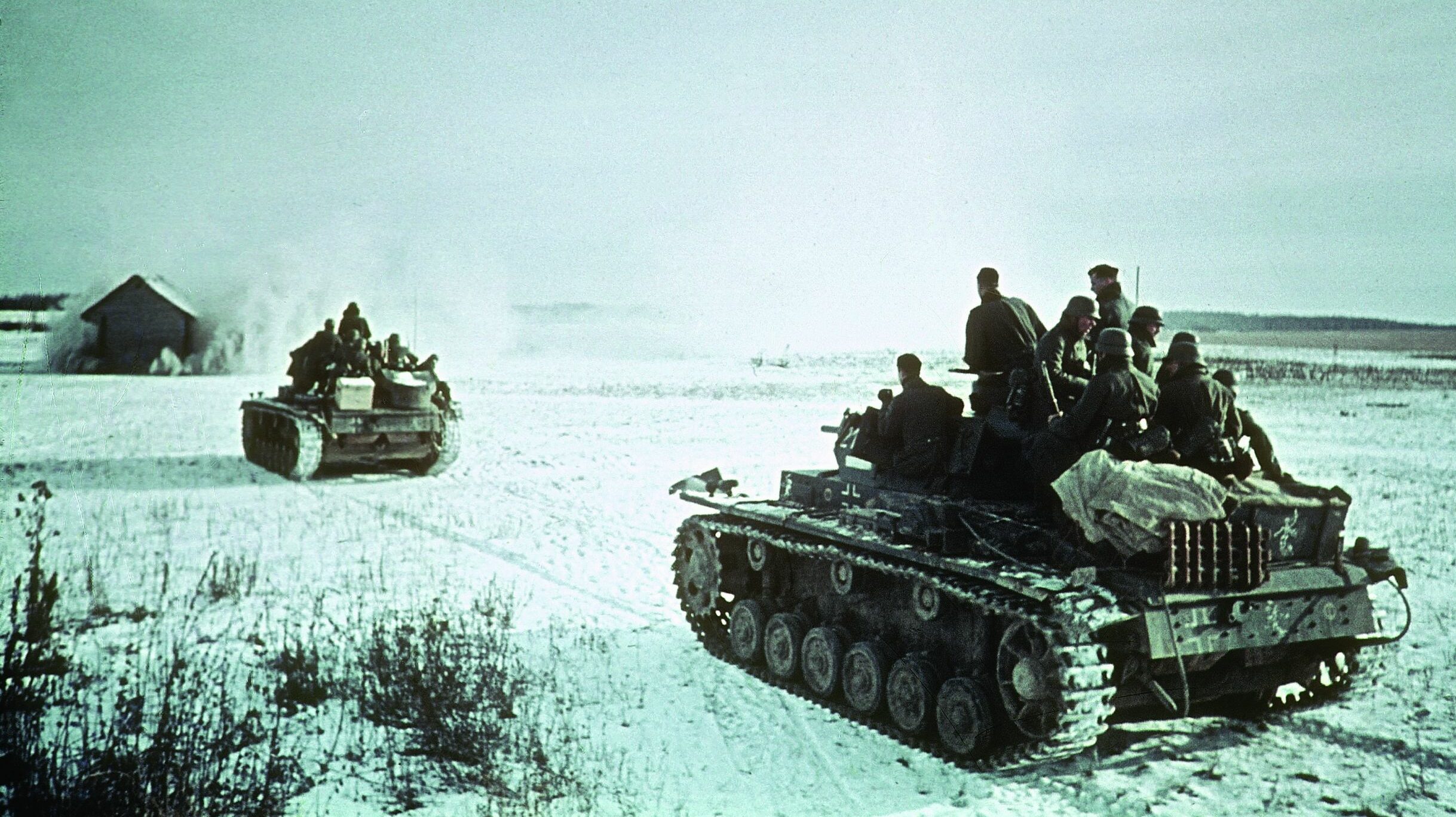
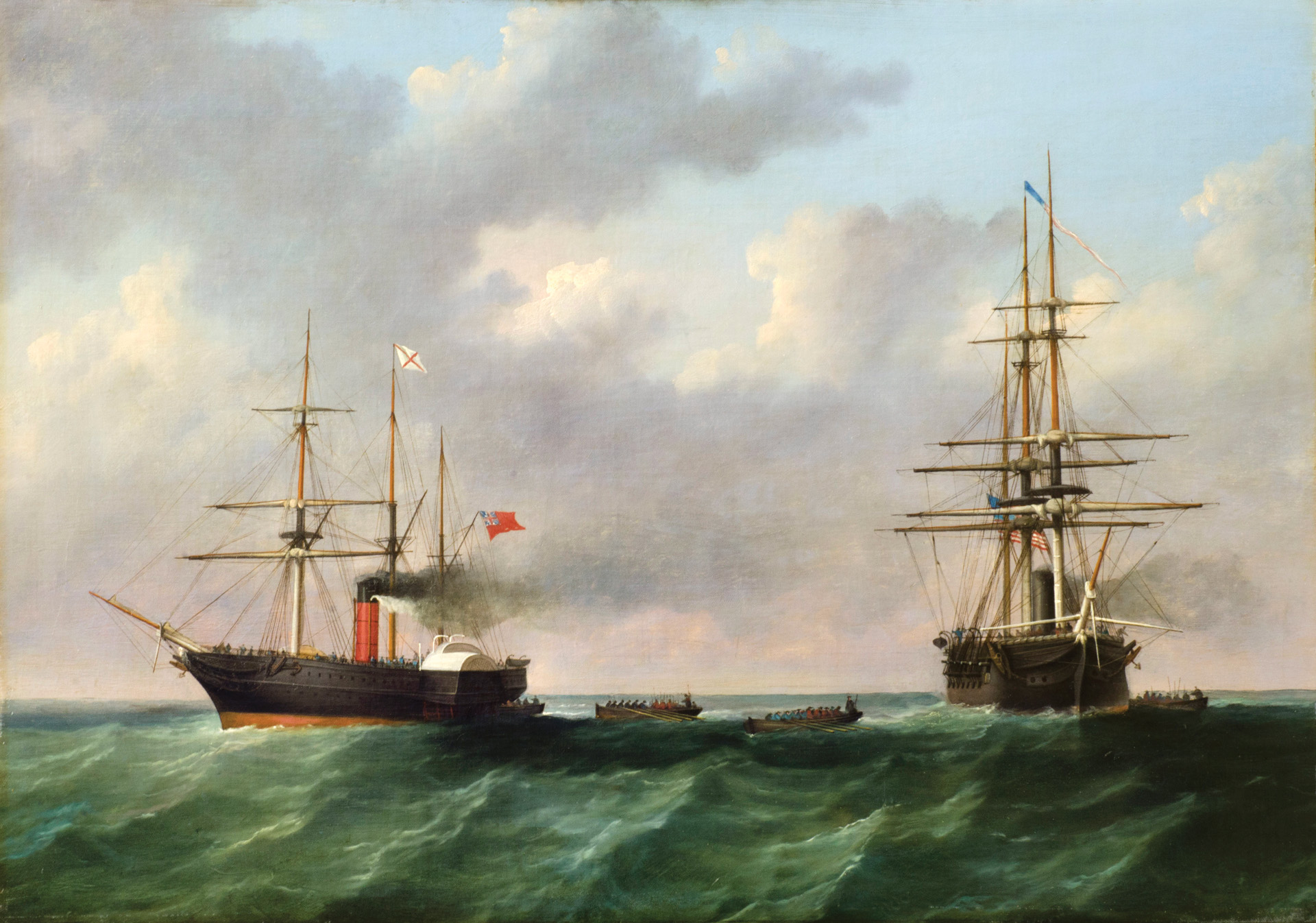
Join The Conversation
Comments
View All Comments